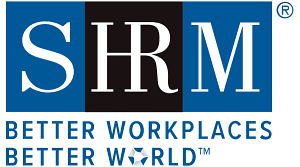Estimated reading time: 4 minutes
One of my first roles in HR involved technology. The company I worked for had their own proprietary human resources information system (HRIS). When system users (aka the HR team) had requests to change the system, they would send their suggestions / ideas to me. I would collect them and forward them to the technology department. When a request was completed, I would test it and help with the implementation communications.
Of course, a lot has happened in both HR and the technology world since then, but one thing is still important – HR needs to play a key role in the company’s technology strategy. Today’s business world is dependent on technology, which means that employees are dependent on technology to get their work done.
Even if you don’t use a computer every day, it’s likely that you use a smart phone to communicate with your boss or coworkers. You might also track your working hours via an app. Maybe the work you complete is entered into a software program so others can plan and organize customer touchpoints. You get the idea. Technology is increasingly a part of our professional lives.
The Society for Human Resource Management (SHRM) recently partnered with the California Institute of Technology (CalTech) to create a credential program for human resources professionals. It’s called the SHRM CalTech Advanced Technology Credential.
SHRM gave me the opportunity to preview this program and share my takeaways with you. Before I talk about the program content, let me tell you a few logistical details. The program is online and self-paced. It takes about 20 – 24 hours to listen to all the content. You can earn up to 24 SHRM professional development credits (PDCs).
The content is presented in five sections:
- Cybersecurity Fundamentals
- Cloud Computing
- Systems Thinking
- Artificial Intelligence
- Data Analytics
There’s also a sixth optional section on virtual and augmented reality, which is very interesting and worth checking out.
Each section is led by a CalTech faculty member or subject matter expert (SME) who brings both theory and practical application to the material. At the end of each session, you’re asked to answer a couple of questions. Then at the end of the program, you’re asked to answer about a dozen questions.
If you’ve taken a credentialing exam before, then you’re probably used to a formal proctored experience with lots of exam questions. This program is not like that. It’s more casual with the focus on the session content.
Speaking of the session content, I thought this program did a great job of balancing technology fundamentals with strategic considerations. For example, in the cloud computing section, the presenter discussed the different models (SaaS, PaaS, and IaaS) and how they are being used in organizations. As HR professionals, this is information we should know now and in the future. It impacts our technology strategy and decision making.
Another example was in the final (optional) session where the presenter shared the differences between virtual reality, augmented reality, extended reality, and the metaverse. Then, they connected these concepts to employee training and how organizations are using technology to simulate learning environments. While some companies might not be thinking about this right now, with access to VR headsets becoming more mainstream, it might not be as far away as we think.
I’ve said before that employees expect their technology experience at work to be similar to the technology experience they have at home. This means organizations need to think about what the future employee technology experience will look like. The time to get educated about these concepts is now. And since this is a self-paced program, you’re not in a rush to complete it. I completed a section each week.
Organizations should have a technology strategy. They need one for customers, which means they need one for employees. HR professionals should play a key role in developing the employee technology strategy. I thought the SHRM CalTech Advanced Technology Credential provided a good refresher on technology fundamentals and valuable insights to consider for the future.
I know there’s a lot of talk about keeping the human in human resources. Knowing technology isn’t about removing the human part. Knowing technology is about creating a work environment where technology does what it does best. That way, the rest of our time is spent focusing on the human part.
Image captured by Sharlyn Lauby at the SHRM Annual Conference in Las Vegas, NV. SHRM logo used with permission.
The post HR Professionals Play a Key Role in Technology Strategy appeared first on hr bartender.





